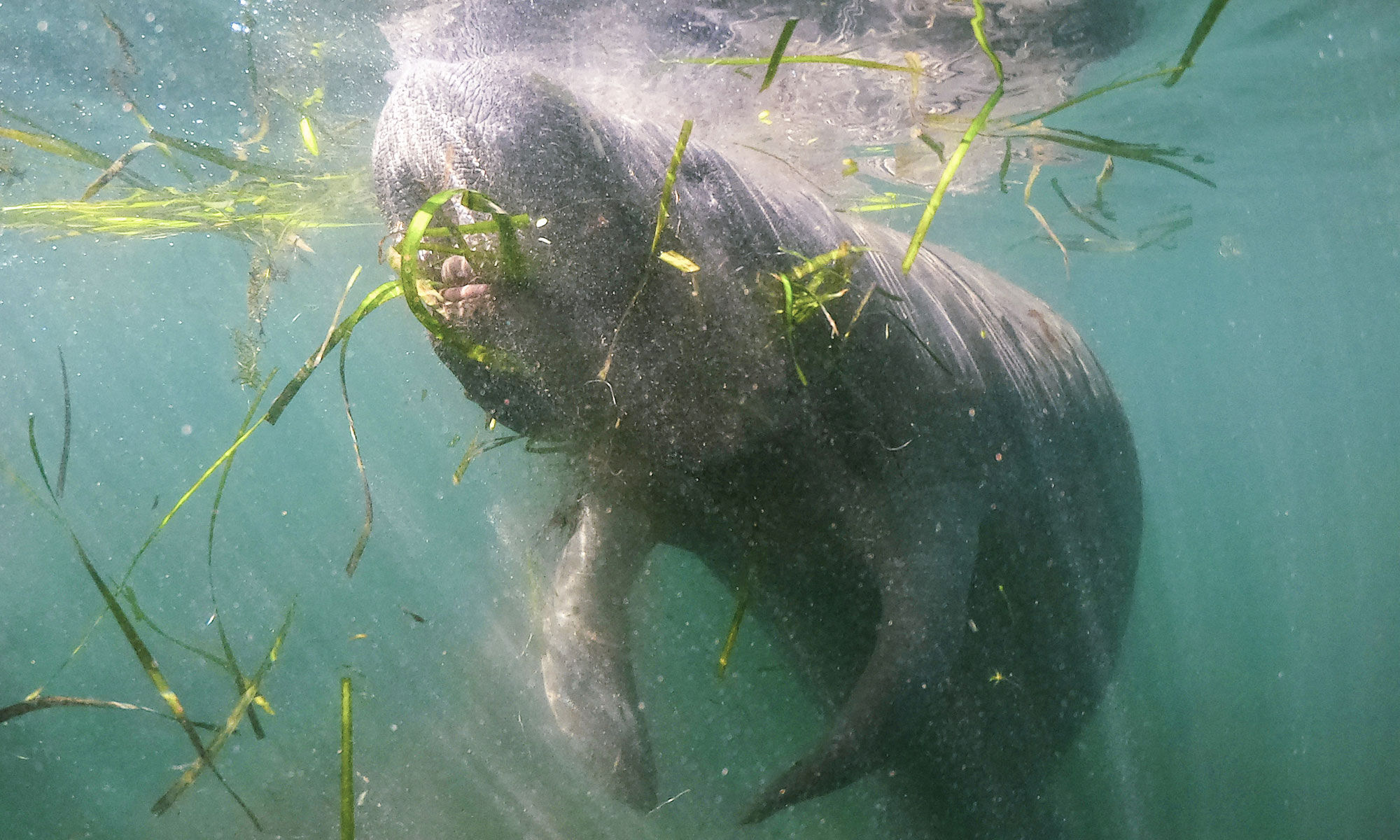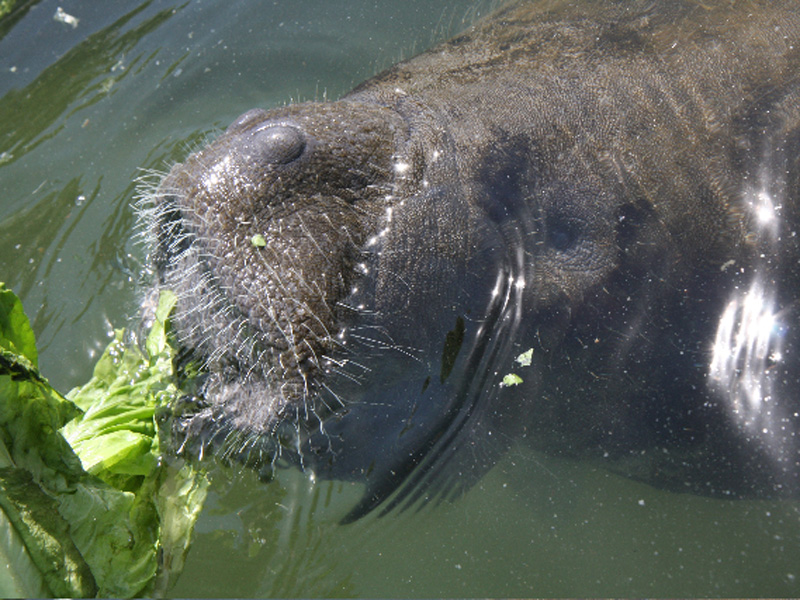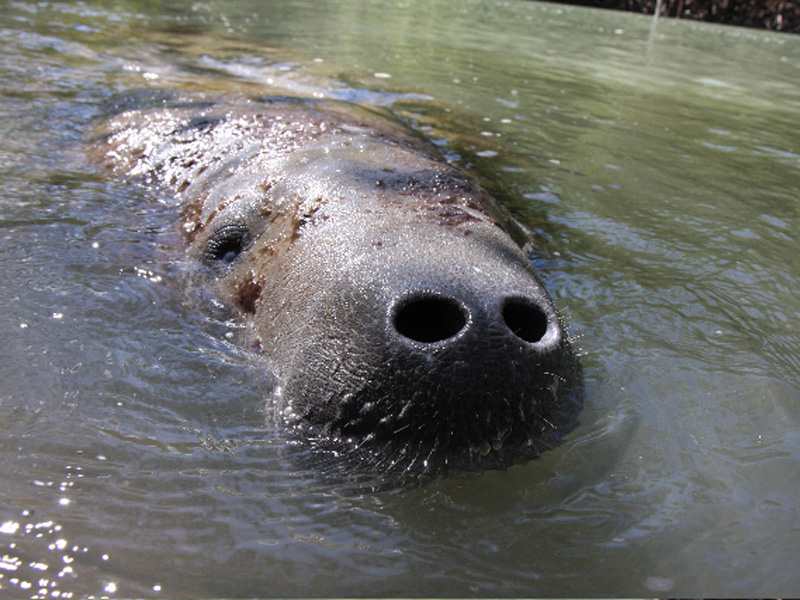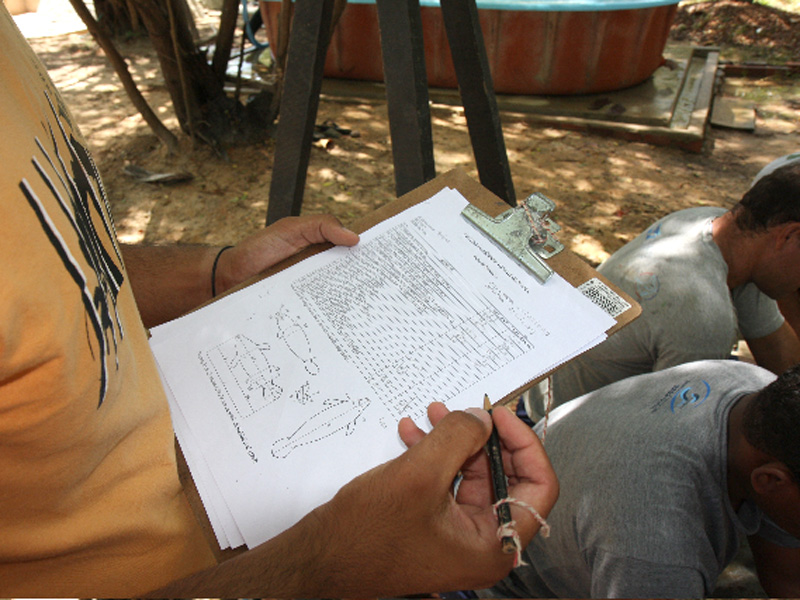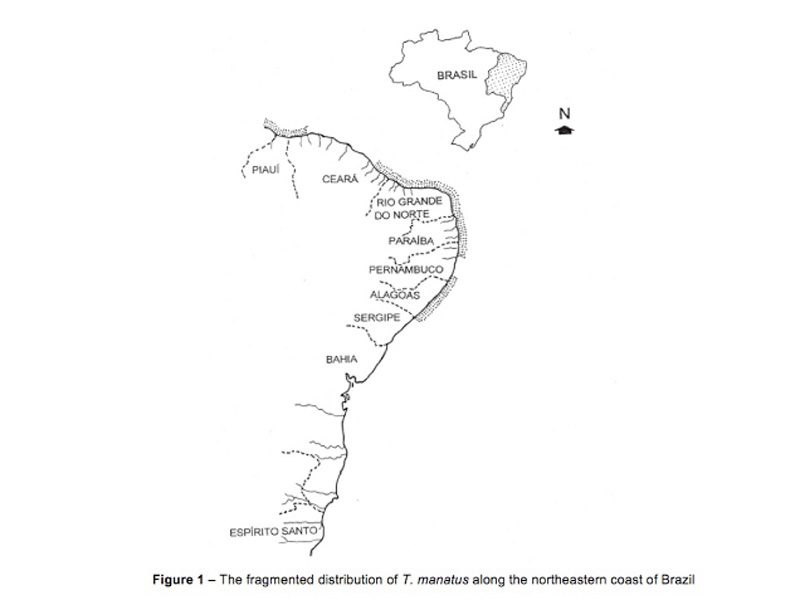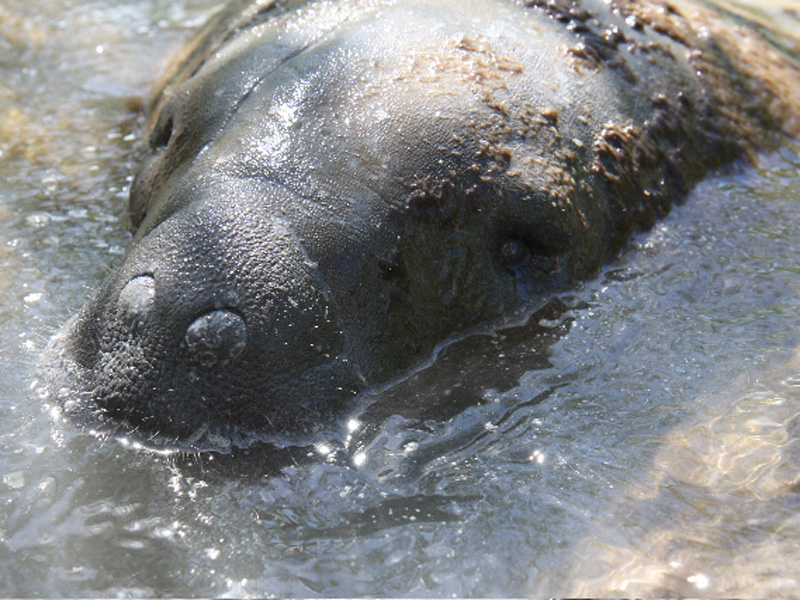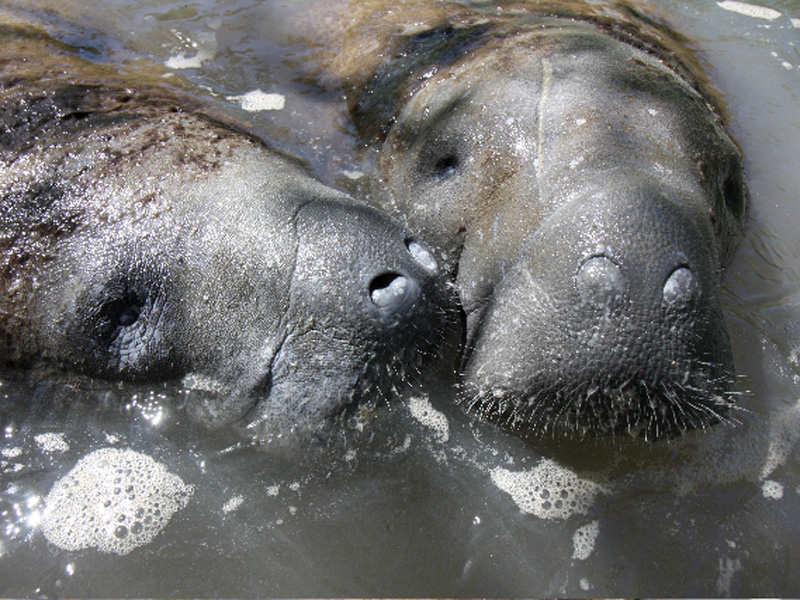Habitat destruction and, in isolated cases, targeted killing are the most important threats to the manatee population. Although figures on the manatee population as a whole are unknown, recent studies show that in some areas of their original range, the animals no longer occur. At present, the distribution of manatees is patchy, which in turn means that only small, isolated manatee populations remain.
According to the IUCN Red List, the overall population of this South American manatee subspecies is declining and is therefore classified as endangered.
YAQU PACHA is working together with PROYECTO SOTALIA in Venezuela on the compilation of scientific information about the manatee (Trichechus manatus manatus). Projects have been carried out to study basic biological and ecological data, as well as the threats to the species throughout its range in Venezuela, with a particular focus on Lake Maracaibo, as it is one of the main distribution areas of the species.
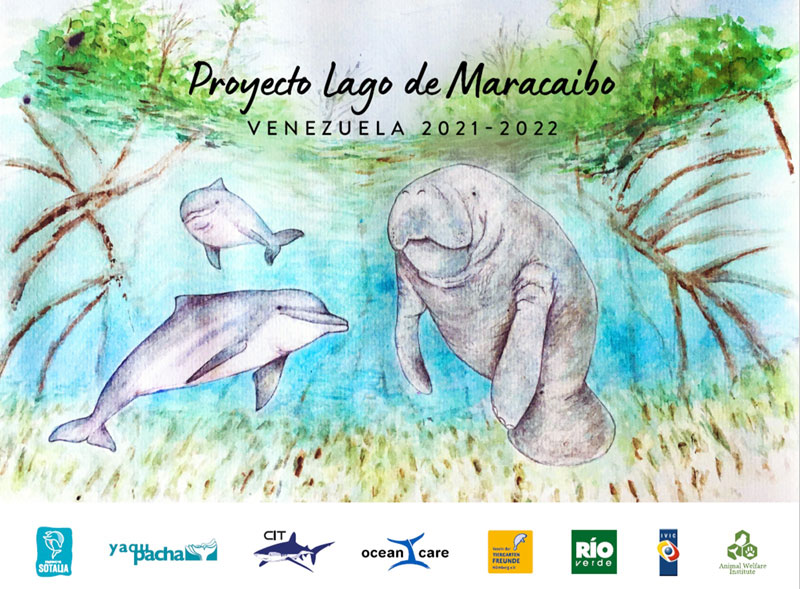
This herbivore is classified as critically endangered in Venezuela nationwide, and it is estimated that its population has declined by almost 80% as a result of hunting, bycatch, loss and habitat destruction. Recognizing this problem and the data obtained, the Manatis project has made efforts to strengthen education and awareness-raising programs and to apply conservation strategies based on citizen participation, with positive results. Ecotourism, which uses manatees as a figurehead, has helped raise awareness and create greater understanding in communities, curbing hunting.
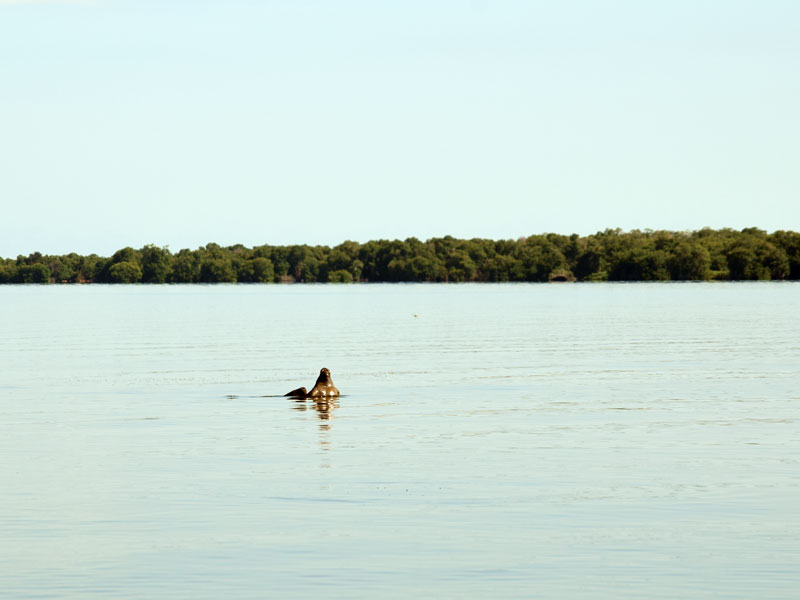
Manatees in Lake Maracaibo in Venezuela: research and educational activities to protect them
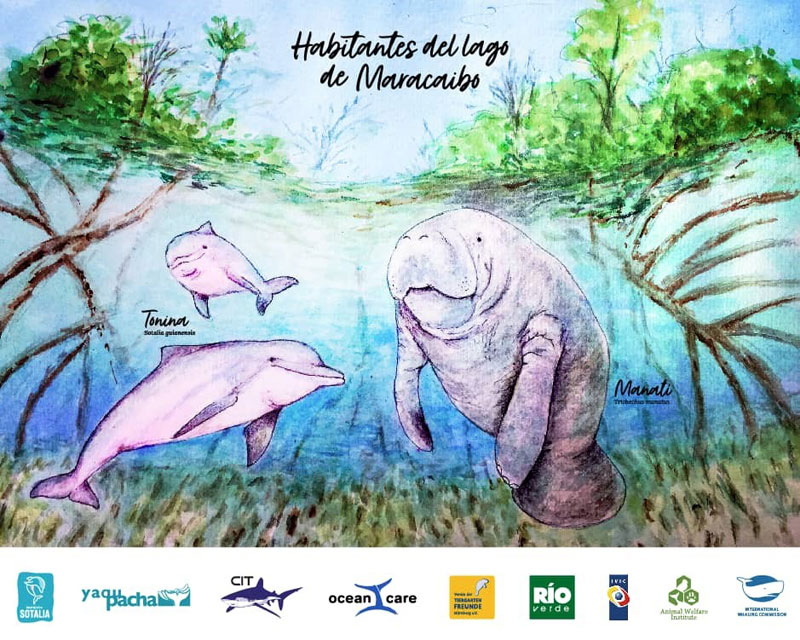
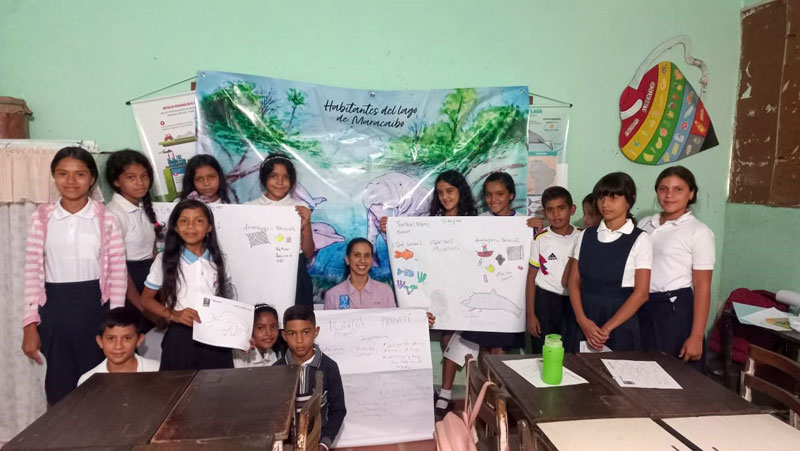
Summary of activities in 2022
Throughout 2021, social networks, interviews and visits to various fishing ports on Lake Maracaibo in Venezuela have been able to identify areas where manatees are still observed. In particular, in the municipality to the north of the lake, in the Ciénaga de la Palmita Nature Reserve, where the presence of the species was detected, a link was made with the local fishermen to prepare the report. throughout the year, observations, strandings or bycatch that have occurred. This was very productive, because during 2022 we were able to confirm the birth of a new calf and the constant presence of a group of 8 manatees during the 12 months, a number that can be considered low, but since it is a shrunken population. in 80% of its total national distribution, it is exceptional news and an opportunity to monitor manatees and understand the characteristics that this region of the lake offers and that are ideal for their survival. The notes highlight that in Venezuela there have been 45 manatee sightings and at least 15 times the individuals have been observed feeding on the coast of Ruppia maritima, which happens in a very shallow area and the transparency of the water allows easy observation of the individuals.
Only one accidental catch of an adult animal was reported, which was freed alive from the nets in this area.
Of the newly visited ports (5), only 4 reported manatee sightings in 2022. The total of 9 sightings were distributed among 3 on the eastern central coast of the lake (San Timoteo), 3 in the northwestern region (San Carlos and Zapara Islands and Maracaibo City), 2 in the southwest (Puerto Concha) and 1 in the southeast.
From these records, it is worth noting that for the second time he was able to observe a group of manatees mating on the shores of the lake in the city of Maracaibo. This event was recorded by people in the city and widely shared on social networks due to its novelty. On the video you can see 4 individuals, 3 of which are stalking the female manatee, one of which was a juvenile, considering its length. These data, along with the data collected in September 2021 on the first record of courtship and mating in Lake Maracaibo, will be recorded in a scientific note.
In general, the few reports in the lake can be due to the low density of the species, the difficulty of observing it, errors in the survey or a combination of all these factors. Fishermen often have more information about bycatch, mortality and events, but as this is a prohibited and punished activity, they are afraid to report the events and some do not participate in the interviews. In 2022, 35 fishermen between the ages of 19 and 62 were surveyed.
In order to increase the participation of fishermen, attempts are being made to visit these areas again and again in order to establish links and build trust, thus obtaining better data quality. In the same vein, we continue to use the Ponzi scheme for interviews, where one participant recommends another, which helps to generate greater interest among respondents as they understand that there are no risks in sharing their information.
Printed information about the species was taken away from each visit, and 3 conferences were held, attended by 87 people.
We also worked hand-in-hand with the ecotourism company Fitlosophy in the north of the lake, which works to spread information about endangered species in Lake Maracaibo. On each expedition, tourists receive a lecture on Guyana dolphins and manatees, the company's staff has infographics on both species and knowledge, as they have already been trained and instructed on what aspects to highlight when explaining dolphins and manatees to tourists.
In 2022, a total of 531 people participated in the kayak tour, mainly Venezuelans, but also tourists from Colombia, Argentina, Panama, Chile, Ecuador, Mexico, the United States, Spain, Turkey, India, and the Czech Republic.
Next steps:
• Increased search for information to identify areas of higher presence and mortality of the species.
• Creation of a map of frequent manatee sightings and areas where manatees are most endangered as a stimulus for decision-makers.
• To maintain communication in areas where tourism is already developed and to support it with material, lectures and other topics that they need to promote manatees as a tourist attraction.
• Conduct research to estimate the frequency of encounters with the species in areas where its presence has been frequently detected.
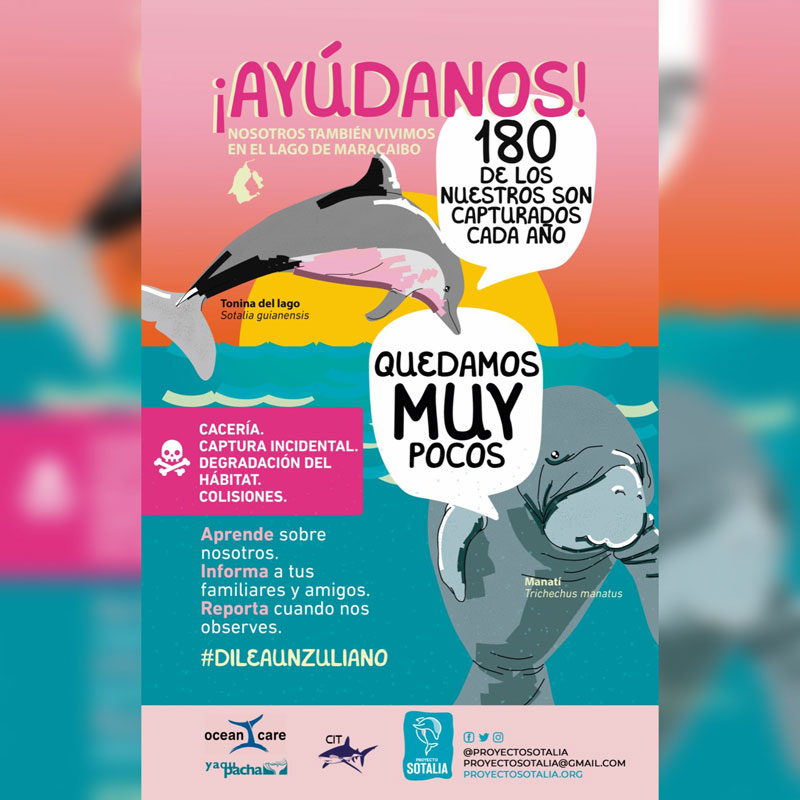
Our species conservation organization YAQU PACHA has been active in Latin America for 30 years to protect endangered aquatic mammal species. You can support our work in species conservation by making a donation or becoming a member .
Project Robben | Bottlenose dolphin project | Bottlenose dolphin | Project Sea Otter | Project Sotalia Delfin | Sotalia Dolphin | Chilean Dolphin Project | Team Latin America | Fishermen in Brazil and the Toninha | Project La Plata Delfin


